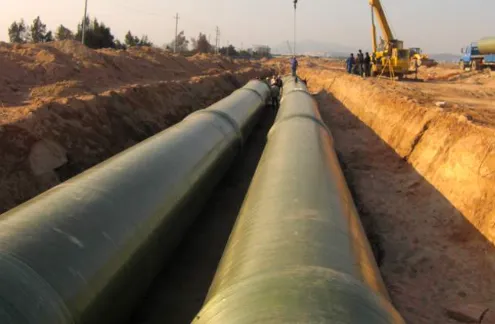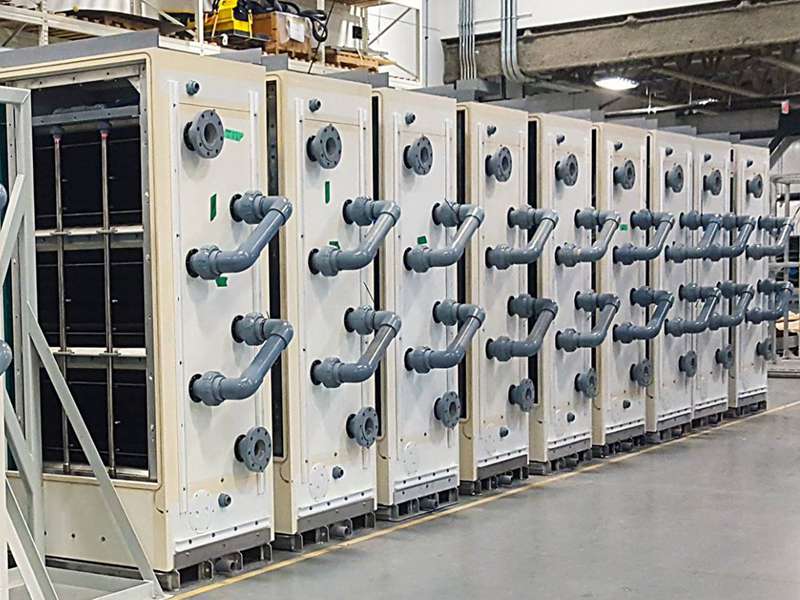
-
 afrikano
afrikano -
 albana
albana -
 Amhara
Amhara -
 la araba
la araba -
 la armena
la armena -
 Azerbajĝana
Azerbajĝana -
 eŭska
eŭska -
 Belarusian
Belarusian -
 bengala
bengala -
 bosnia
bosnia -
 bulgaro
bulgaro -
 kataluna
kataluna -
 Cebuano
Cebuano -
 Ĉinio
Ĉinio -
 Ĉinio (Tajvano)
Ĉinio (Tajvano) -
 korsika
korsika -
 kroata
kroata -
 ĉeĥa
ĉeĥa -
 dana
dana -
 nederlanda
nederlanda -
 la angla
la angla -
 Esperanto
Esperanto -
 estona
estona -
 finna
finna -
 franca
franca -
 frisa
frisa -
 galego
galego -
 kartvela
kartvela -
 germana
germana -
 greka
greka -
 Gujaratio
Gujaratio -
 Haitian Creole
Haitian Creole -
 hausa
hausa -
 havajano
havajano -
 la hebrea
la hebrea -
 Ne
Ne -
 Miao
Miao -
 hungara
hungara -
 islanda
islanda -
 igbo
igbo -
 indonezia
indonezia -
 irlandano
irlandano -
 itala
itala -
 Japanoj
Japanoj -
 la javano
la javano -
 Kannada
Kannada -
 kazaĥo
kazaĥo -
 ĥmeroj
ĥmeroj -
 Ruando
Ruando -
 korea
korea -
 kurda
kurda -
 Kirgizoj
Kirgizoj -
 TB
TB -
 la latina
la latina -
 latva
latva -
 litova
litova -
 luksemburga
luksemburga -
 makedona
makedona -
 Malgashi
Malgashi -
 malaja
malaja -
 la malajala
la malajala -
 malta
malta -
 maoria
maoria -
 Maratio
Maratio -
 mongola
mongola -
 Mjanmao
Mjanmao -
 nepala
nepala -
 norvega
norvega -
 norvega
norvega -
 okcitana
okcitana -
 Paŝto
Paŝto -
 la persa
la persa -
 pola
pola -
 portugala
portugala -
 panĝaba
panĝaba -
 rumana
rumana -
 rusa
rusa -
 samoano
samoano -
 Skotgaela
Skotgaela -
 serba
serba -
 la angla
la angla -
 Ŝona
Ŝona -
 Sinda
Sinda -
 Sinhala
Sinhala -
 la slovaka
la slovaka -
 sloveno
sloveno -
 Somalo
Somalo -
 hispana
hispana -
 Sundanese
Sundanese -
 Svahila
Svahila -
 sveda
sveda -
 la tagaloga
la tagaloga -
 taĝiko
taĝiko -
 la tamila
la tamila -
 tataro
tataro -
 la telugua
la telugua -
 tajlanda
tajlanda -
 Turka
Turka -
 turkmenoj
turkmenoj -
 ukraina
ukraina -
 Urdu
Urdu -
 ujgura
ujgura -
 uzbeko
uzbeko -
 vjetnama
vjetnama -
 kimra lingvo
kimra lingvo -
 Helpu
Helpu -
 jida
jida -
 joruboj
joruboj -
 la zulua
la zulua
Maintenance Strategies for Long Fiberglass Pipe Life
In industrial applications demanding corrosion resistance, longevity, and cost-efficiency, fiberglass reinforced plastic (FRP) pipes, also known as glass-reinforced plastic (GRP) pipes, have become a cornerstone solution. Their unique material properties offer significant advantages over traditional materials like steel or concrete. Ensuring these benefits translate into decades of reliable service, however, hinges on implementing effective maintenance strategies from installation through operation. Manufacturers like Hengshui Jrain FRP Co., Ltd., a professional composite product manufacturer based in Hengshui City, China, have been producing high-quality FRP pipes since 2008. Their ongoing commitment to improving products, processes, and market development underscores the importance of not just manufacturing robust pipes, but also supporting their long-term performance through proper care.
The inherent advantages of fiberglass pipes – including exceptional corrosion resistance tailored to specific environments, remarkably light weight (less than 20% of steel, 10% of concrete), superior strength-to-weight ratio (often stronger than steel pound-for-pound), a low coefficient of friction (offering >25% better flow than steel), excellent dimensional stability, low thermal conductivity, and significantly reduced long-term maintenance costs – provide a solid foundation for durability. However, proactive maintenance maximizes this potential, safeguarding the investment and minimizing operational disruptions.

Understanding FRP Pipe Material Fundamentals
The longevity of any FRP pipe system starts with understanding its construction. Unlike metallic pipes, GRP pipes are composite structures, typically built using a sophisticated layering process. The quality of raw materials (resins, glass fibers) and precise manufacturing control are paramount. Reputable manufacturers, such as Jrain FRP, employ rigorous processes to ensure consistent quality in their large-volume production. A typical manufacturing sequence involves:
|
Typical FRP Pipe Manufacturing Process Flow |
|
1. Wind mylar, spray resin and wind surface mat |
|
2. Make liner and liner’s cure |
|
3. Add mixing stuff/resin/mortar (design-dependent) for stiffness |
|
4. Perform hoop and helix winding for longitudinal & hoop strength |
|
5. Cure pipe using far infrared rays |
|
6. Cut/grind pipe ends for bell & spigot joint (joint-dependent) |
|
7. Extract pipe from mandrel hydraulically |
|
8. Conduct hydrostatic test; release if qualified |
This process creates pipes with a corrosion-resistant inner liner, a structural wall providing the required pressure rating and stiffness, and often a protective outer layer. Recognizing this layered structure is crucial for effective inspection and maintenance planning. The tailored corrosion resistance and excellent strength-to-weight ratio are direct results of this engineered fabrication.
Implementing Fiberglass Pipe Inspection Protocols
Proactive inspection is the bedrock of long fiberglass pipe life. Regular visual inspections should be scheduled to identify potential issues early. Key areas to examine include:
- External Surface:Look for signs of impact damage, abrasion, excessive UV degradation (chalking, fading – mitigated by gel coats or additives), blistering, or cracking. Pay close attention to supports, penetrations, and areas prone to mechanical damage.
- Internal Surface (if accessible):Check for erosion, chemical attack (unusual softening, discoloration, or degradation of the liner), or buildup that could accelerate corrosion or reduce flow.
- Joints and Connections:Inspect bell and spigot joints, flanges, or other connection points for leaks, signs of stress, or seal degradation. Ensure bolts are properly torqued (avoid over-torquing).
- Supports and Hangers:Verify that supports are correctly spaced (preventing excessive deflection) and properly designed to avoid point loading or abrasion. Ensure they allow for thermal expansion/contraction.
Beyond visual checks, more advanced non-destructive testing (NDT) methods like ultrasonic testing (UT) can assess wall thickness and detect internal flaws, while acoustic emission monitoring can sometimes detect active defects under pressure. The low thermal conductivity of FRP pipes can be an advantage during thermal inspections for detecting voids or delaminations. Establishing a baseline inspection record upon installation is vital for tracking changes over time.
Optimizing GRP Pipe Operation Conditions
While GRP pipes are highly durable, operating them within their design specifications significantly extends service life. Key operational considerations include:
- Chemical Compatibility:Strictly adhere to the pipe's chemical resistance ratings for the specific fluids being transported. Even minor changes in process chemistry should be checked against the liner material's compatibility. Jrain FRP and similar manufacturers tailor liners for diverse corrosive conditions, but operating outside design limits accelerates degradation.
- Temperature and Pressure:Never exceed the maximum design temperature (considering both fluid temperature and ambient conditions) or pressure rating. Cyclic pressure and temperature variations should also be within the pipe's fatigue endurance limits. The good dimensional stability helps, but extremes cause stress.
- Fluid Velocity and Abrasion:Control fluid velocity to minimize erosion, especially with abrasive slurries. If abrasion is a concern, specify pipes with enhanced abrasion-resistant liners during the initial procurement from bulk manufacturers.
- External Environment:Protect pipes from excessive UV exposure using coatings or shelters if not factory-protected. Shield buried pipes from excessive soil stress or unstable ground. Prevent external chemical spills or contamination. The low long-term maintenance cost advantage is quickly eroded by environmental damage.
- Cleaning Procedures:Use only cleaning methods and chemicals compatible with the FRP pipe Avoid high-pressure water jetting unless confirmed safe for the specific pipe construction, as it can damage the surface or force water into the laminate.
FAQs About FRP Pipe Maintenance
What are the most common causes of failure in FRP pipes that maintenance can prevent?
The most common preventable failures stem from mechanical damage (impact, improper support), chemical attack (operating beyond design limits), abrasive wear (excessive velocity with abrasives), UV degradation (lack of protection), and improper installation (especially joint issues). Proactive inspection and adhering to operational limits directly address these.
How often should routine visual inspections be performed on fiberglass pipe systems?
Frequency depends on the criticality of the service, the operating environment, and previous inspection history. A general guideline is annual external visual inspections. More frequent checks (e.g., quarterly or semi-annually) are recommended for harsh environments (high UV, chemical exposure, abrasion), critical services, or after any known impact or system upset. Internal inspections during shutdowns are highly valuable.
Can existing GRP pipe be repaired if damage is found?
Yes, most damage to GRP pipes can be effectively repaired using approved composite repair techniques and materials. Common methods include laminate patching for structural damage, resin injection for small leaks or voids, and specialized wraps for larger areas or joints. Repairs must be performed by trained personnel following manufacturer or industry-standard procedures to ensure integrity.
Does the low maintenance cost of FRP pipe mean no maintenance is needed?
Absolutely not. While FRP pipes typically incur significantly lower long-term maintenance costs compared to alternatives like steel (due to no corrosion-related repairs/replacements), they are not maintenance-free. Proactive inspection, operating within design limits, and timely repairs are essential to realize their full lifespan and cost-saving potential. Neglect can lead to premature failure.
What role does the manufacturer play in supporting long-term FRP pipe life?
Reputable manufacturers like Hengshui Jrain FRP Co., Ltd. provide crucial support by supplying pipes manufactured to strict quality standards using controlled processes (like the flow above), offering comprehensive design and chemical resistance data, specifying proper handling and installation procedures, and sometimes providing guidance on inspection and repair. Choosing a manufacturer with proven experience in bulk production for industrial applications ensures access to reliable technical support.
Maximizing the service life of FRP, fiberglass, or GRP pipes is a direct result of informed procurement, correct installation, and diligent maintenance. Understanding the composite nature of these pipes, implementing regular and thorough inspection protocols, and rigorously adhering to operational design parameters (chemical, temperature, pressure, abrasion) are fundamental strategies. The inherent advantages – exceptional corrosion resistance, light weight, high strength, low friction, dimensional stability, low thermal conductivity, and reduced long-term costs – are best preserved through proactive care. By partnering with experienced manufacturers committed to quality, like Hengshui Jrain FRP Co., Ltd., and establishing robust maintenance programs, industries can ensure their fiberglass pipe systems deliver decades of reliable, cost-effective performance.
Lastaj novaĵoj
-
Rectangular Tanks: Durable, Custom-Sized Storage SolutionsNovaĵojAug.28,2025
-
Fiberglass Duct Our Commitment to Quality719NovaĵojAug.22,2025
-
Fiberglass Duct Our Commitment to QualityNovaĵojAug.20,2025
-
FRP Winding Machine with Precision WindingNovaĵojAug.20,2025
-
Fiberglass Walkway Grating with Easy InstallationNovaĵojAug.20,2025
-
Rectangular Fiberglass Tanks for Industrial StorageNovaĵojAug.20,2025









